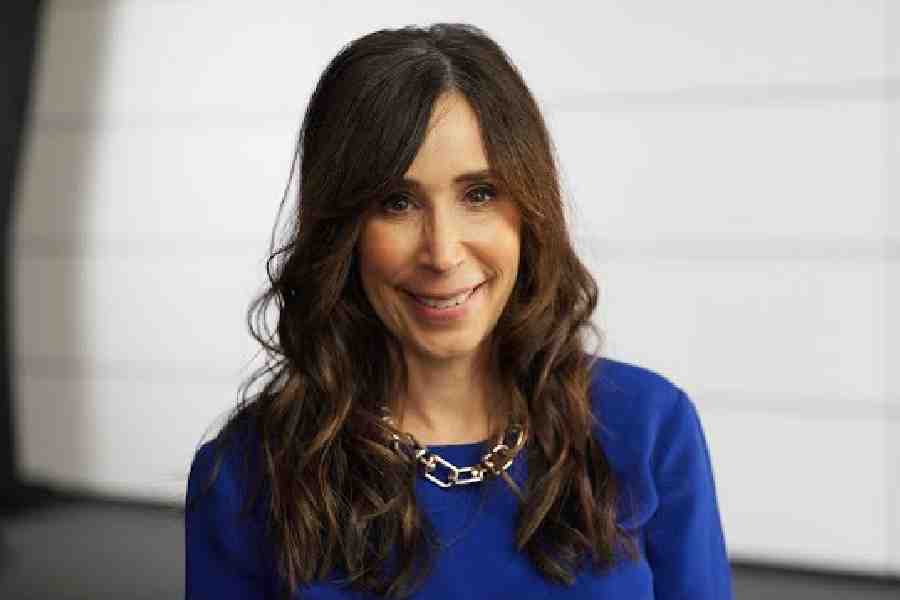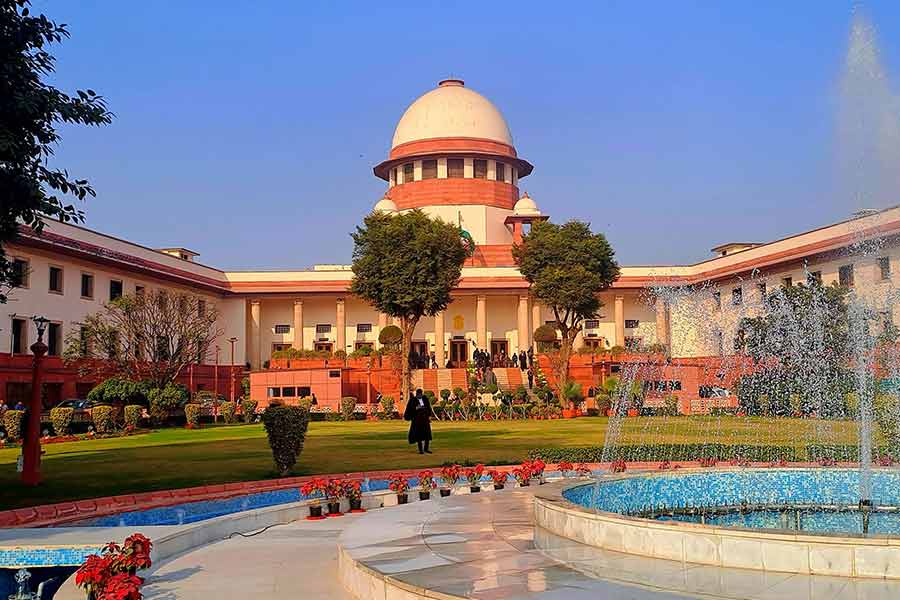 |
Suresh Kumar Sahu won’t forget that day for a long time. Hundreds of youths descended on Paburia village in Orissa’s Kandhamal district and torched houses belonging to Christians on August 26. “They were shouting Bajrang Bali Ki Jai and Bharat Mata Ki Jai,” says the villager.
Fingers were immediately pointed at the Bajrang Dal, the youth wing of the Vishwa Hindu Parishad (VHP), which is a part of the Rashtriya Swayamsevak Sangh (RSS) family. After all, Swami Lakshmananda Saraswati, whose murder sparked the anti-Christian attacks, was a VHP member. The allegations got shriller as attacks on churches spread to Karnataka, with stray incidents in Kerala and Tamil Nadu. The admission by the Dal’s Karnataka unit of its involvement in the attacks and the arrest of its convenor, Mahendra Kumar, prompted a rising chorus for a ban on the organisation.
“On what grounds,” asks the Dal’s sandalwood-kumkum tilak sporting national convenor, Prakash Sharma. “The Dal has no role at all in the Orissa violence.” Kandhamal does not figure in the list of 200 Dal units in the state, adds Subhash Chouhan, the soft-spoken state convenor. “We have nothing to do with the violence. The attacks on Christians are purely a spontaneous local reaction to the killing of the swami.”
The police have arrested around 470 people on charges of instigation and conspiracy, but the Dal has not been implicated. “I do not want to name any organisation,” says R.S. Koche, deputy inspector general, southern range. As for Karnataka, Kumar resigned as convenor after a strong letter from Sharma rebuking him for the incidents in the state.
Is the Dal a scapegoat or a diabolical hate monger? The jury is still out on that, but it has certainly come a long way since October 13, 1984, when it was set up to provide security to the Ram Janaki Rath Yatra. The yatra was organised by the VHP to whip up support for the Ayodhya movement. Two years later it went national as the VHP’s youth wing. It debuted in Orissa, however, only in the late 1990s.
 |
| PLEADING NOT GUILTY: Prakash Sharma, Bajrang Dal national convenor |
After the demolition of the Babri Masjid on December 6, 1992 — a day it commemorates as Bravery Day — the Dal broadened its agenda. “Hanuman (after whom the Dal is named) descended on earth to help Ram gain victory over Ravan, but his work wasn’t limited to that; he appears in the Mahabharat too and is eternal,” says Sharma. Similarly, after having “liberated” the Ram Janmabhoomi, Dal volunteers turned their attention to what he calls a host of problems before Hindu society. Moral rectitude is high on the agenda. “A country whose youth is high on wine and debauchery is doomed,” thunders Sharma, ruing that Hindu youth are dissipating their energies with three Ds — drinks, drugs and dance.
So it’s no to Valentine’s Day celebrations and beauty pageants. Hindu girls marrying Muslims are often forced to return to their parents. “We only act when parents approach us,” insists Surendra Jain, the Dal’s former national convenor, even as he talks about a conspiracy to convert Hindu women and use them to increase Muslim numbers, similar to the “grand plan” to transform India into a Christian country. Also not acceptable are portrayals of anything that they feel denigrates Hindu society or religion — whether it is lesbianism in Deepa Mehta’s Fire or the artistic licence by M.F. Hussain while painting Hindu goddesses.
Far from being a shadowy, amorphous grouping, the Dal has a clear organisational hierarchy and designated responsibilities (see infographic) to implement its motto of seva, suraksha, sanskriti (service, security and culture). There’s a clear accent on ideological programming at weekly Hanuman Chalisa reading sessions at temples and on physical vigour and fitness camps. The vast network of locality-level security committees, which often function as vigilante groups and work closely with local authorities, is the aggressive face of the Dal. “There are several instances where they have helped the police,” says Sharma.
There’s a gentle face too, designed to win over supporters and keep the Hindu flock together. So the Dal arranges for vocational training and coaching classes during examinations, while its volunteers help out at temples and in religious processions. Through cultural centres, activists fan out into poor localities, inculcating the “right values” among children there — patriotism, personal cleanliness, respect for elders.
It certainly seems to have worked. Over the past 24 years, the Dal has grown from 100-odd members in Uttar Pradesh to a formidable nationwide network of close to 11 lakh active supporters between the ages of 15 and 35 (the national convenor can be up to 45 year old). Orissa has seen a huge rise in membership in the last three years to touch 20,000. “There’s a craze among the youth to join us,” exults Chouhan. There’s no formal membership, though. “You don’t have to sign a membership form to be a patriot or protector of one’s religion,” says Sharma. “We consider all Hindu youth our members.”

Charge of the trident brigade
 |
| ARMS AND THE MEN: Bajrang Dal activists in Indore |
Those who silently support the organisation are far more, says Jain, who questions the portrayal of the Dal (often even by other saffron groups) as a collection of lumpen elements. Each of the four national convenors, he points out, is well educated (he himself is an economics lecturer in Rohtak, while Sharma is an advocate in Kanpur). Recently, he claims, a large number of information technology professionals in Pune joined the Dal. Funds, therefore, are not a problem. “We have enough sympathisers who take care of our simple needs,” he smiles.
The attacks on the Christians and the death of three persons — said to be Dal activists — while making bombs in Kanpur in August have raised suspicions that it has changed its strategy of belligerent vigilantism to indulging in terror. In Orissa, the Dal hit the headlines with the murder of Australian missionary Graham Staines and his two children in 2003. The killer, Dara Singh, was said to be a Dal member. Few are willing to buy the argument that the attacks on Christians are spontaneous local reactions. Hindu organisations like the Dal, alleges the Bhubaneswar-based social activist Hemant Nayak, are driving a wedge between tribal groups. Charges and counter charges, supported by documents, fly thick and fast between Christian groups and the Dal.
Sudhanshu Nayak, general secretary of the YMCA in Bhubaneswar, rubbishes the Dal’s claim of innocence and names three of those arrested as its activists. “Go and ask anyone about them and they will tell you that these people belong to the Dal. If the Dal doesn’t claim so, they have their own reasons.”
Dal leaders insist the organisation is more sinned against than sinning. The D.C. Wadhwa Commission absolved the Dal of involvement in the Staines murder (while holding Singh guilty) while other charges of rape of nuns by its activists have been proven false, they point out. Of those killed in Kanpur, only one was a former Dal activist who had left the organisation nine years ago. “If the Dal is to be banned because of what a former member did, the Congress too should be banned,” fumes Sharma, referring to the conviction of Mohammed Surti, a Gujarat Congressman and former minister convicted for involvement in the 1993 Surat blasts. “We don’t believe in violence,” he insists.
Is vandalism acceptable, considering the many incidents where Dal activists have gone on the rampage, over Valentine’s Day celebrations, the screening of controversial films and exhibitions of paintings? “Our workers go to protest, things go out of hand,” deadpans Sharma. Dal workers, says Jain,” are assertive; at times they can be aggressive. They are not violent. Any large organisation cannot have violence as its motto.” At the same time, he warns, the Dal does not believe in turning the other cheek.
Nor will Jain accept the charge that the Dal is unable to control its cadres. “We may not be as strict as the RSS but our cadres are well disciplined; orders from the top are followed verbatim right down to the lowest level.” In 2004, he points out, another Karnataka convenor, Pramod Muthalik, had to quit because he gave responsibilities to people of slightly dubious reputation. “No one is allowed to sully the ethos of the organisation.”
The sudden step-up in the Dal’s activities have raised suspicions that it is being used to play on Hindu sentiments and garner support for the Bharatiya Janata Party (BJP) ahead of the elections. “Our work has continued at the same pace,” rebuts Jain. If elections were the motive, argues Ram Madhav, national spokesperson of the RSS, the Karnataka incidents should have taken place before the assembly elections. Sharma lobs the ball right back. “Did we ask for the transfer of land for Amarnath pilgrims to be revoked? Did we ask for Swami Lakshmananda to be killed?” It is the secular lobby, he charges, that is making this an election issue to woo the minorities.
The BJP finds itself caught in a bind. The Dal’s predilection for strong arm tactics is embarrassing, but its network is useful during the elections. Dal members are not allowed to join political parties, but with two former national convenors, Vinay Katiyar and Jaibhan Singh Pawaiyya as its MPs (they had to quit the Dal first), it cannot distance itself beyond a point. That’s why its leaders are firm against any ban on the organisation.
The Dal and the RSS also distance themselves from other instances of Hindu fanatics involved in bomb attacks (see box). “When there is a problem some Hindus will claim proximity to Hindu groups like ours. There is no mandate for any violence in any parivar organisation,” says RSS’s Madhav.
Banning the Dal may not be easy. A watertight case to ban an organisation, says B. Raman, director at the Chennai-based Institute of Topical Studies, will depend on the group’s goals and whether it advocates resort to violence to achieve its objectives as a policy, whether it runs training camps and the kind of training it imparts, whether it has links with foreign terrorist organisations and, finally, its involvement in overt acts of terrorism. Overtly, at least, few of these apply to the Dal. “At the most, you can call it fundamentalist, but definitely not anti-national or terrorist,” says Madhav.
Congress leader Salman Khursheed has little time for quibbling over words. “Anybody who challenges the idea of India as reflected in the Constitution is anti-national,” he declares.
The Dal would say it works for India. But for a Hindu India, its critics say.
Hindu face of terror
Velly Thevar profiles a Hindu zealot who is accused of having been involved in bomb blasts in Maharashtra
Ramesh Gadkari looked so mild that Mumbai’s Anti Terrorist Squad (ATS) chief Hemant Karkare was stumped. “Could this harmless looking, pot-bellied man really be a terrorist,” thought Karkare, who zeroed in on Gadkari as an accused during the course of his investigations into a Thane theatre bomb blast in July.
On September 10, the ATS filed a chargesheet implicating Gadkari, his assistant Vikram Bhave, and four others in blasts that rocked Thane, Panvel and Vashi in Maharashtra in the last six months. Gadkari, 50, was a member of the Sanatan Dharma Sanstha (SDS) and the Hindu Jan Jagruti Samiti (HJJS).
The HJJS was started in 1993 by a doctor called Durgesh Samant who ran a hospital in Sangli. The police say Samant came under the influence of Jayant Athavale, who founded the SDS in 1990 and is now based in Goa. The JHHS is the “active arm” of the SDS.
“You would be surprised by the erudition and education of the members. They do not wield the trishul. They are motivated, argue well and go about with their protests in an organised manner,” says a police officer who has been documenting the HJJS’s activities for eight years. He points out that many HJJS members work in reputed organisations in India and abroad.
Gadkari, who holds a diploma in electrical engineering, used to run an electrical parts business when he came in touch with the SDS. “Till 1993, I was into alcohol, depressed and led a wayward life. Then I met a man who changed my life. He was from the Sanstha and when I started going for their discourses I started feeling better,” he says in his confession to the police.
Gadkari sold his company and property to set up in 2001 an ashram for the Sanstha in Panvel near Mumbai. In 2005, Gadkari met Bhave, a sadhak in his thirties. “We discussed the injustices heaped on Hinduism and how nobody cared. We talked about how people celebrated Diwali when the Kanchi Shankaracharya was arrested and paraded like a common criminal. Something had to be done soon,” he says in the confession.
Engineer Bhave — whose mother and father, a producer of Ayurvedic medicines, were sadhaks — sat with Gadkari for days in the Panvel ashram and tested bombs using a hollow bamboo. The police say they flung their first bombs in the direction of a church and a Muslim cemetery near the ashram three years ago.
The police started investigating Gadkari when they found he had parked his scooter at the Thane auditorium for days in a row just before the blast. The HJJS members stress they acted on their own. But the organisations, the police say, are under watch.










